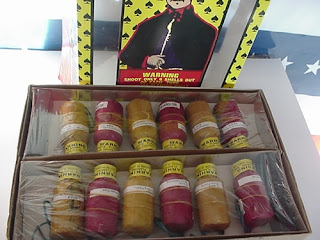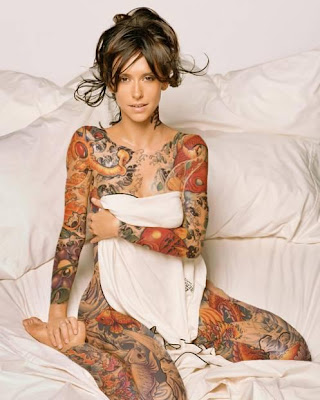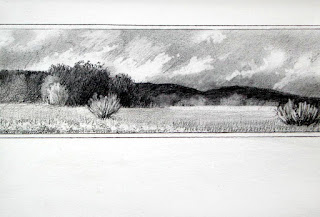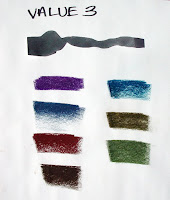Saturday, December 31, 2011
Friday, December 30, 2011
The Big Bang Theory:Sheldon Cooper,Jim Parsons
Sheldon Lee Cooper, real name James Joseph "Jim" Parsons born on 24th March 1973 is an American television actor as well as film actor. Jim was born and raised in Houston, Texas and was the older of the two children. His father president of plumbing supply company died in a 2001 auto-crash. In the year 1996, he got his undergraduate degree from the University of Houston in theater and later enrolled for graduate course in the University of San Diego in year 1999. Jim Parson 6'2" made his first stage appearance in a school play at the age of 6. Jim made several appearances in various shows including role in the series Judging Amy and guest appearance in Ed. He became famous in the year 2007 with the famous and award winning sitcom "The Big Bang Theory", where he plays the role of Sheldon Cooper the great physicist . Sheldon Lee Cooper , B.S, M.A, M.S, Ph.D., Sc.D. is a fictional character portrayed by Jim Parsons.The character played by Jim Parsons is the main reason for success of the Big Bang Theory.
CHAPTER TWENTY-THREE -- FREE YOURSELF FROM THE PHOTO
Spring Canyon, 12" x 18"
Using a photograph as a source of inspiration can be a helpful tool, but as an artist you need to develop the strength to make decisions based on your creativity and ideas, and not become overly dependent on photos. Becoming a better artist is a lot like building muscle. You must make time to work out and improve, and try different exercises to become stronger. Training makes you fit, gives you confidence and allows you to try new and more difficult activities, which can result in new vision and creativity. Your artistic muscle improves when you exercise it independently.
A photograph can assist you in planning a painting. It can be a wellspring of information that helps you recall the place, time and object you’re painting accurately and helps you capture temporal elements not easily recalled. However, the same photograph can come to dominate a painting, slowly and subtly becoming the goal, sapping you of creative strength. Too often a photograph enslaves the unsuspecting painter to some degree of realism, detail or composition, and steals creative aspects. The artist can feel compelled to make the painting almost identical to the photo.
The eye sees differently than the camera. This difference shows in a painting done exclusively using the photo. When you stand in a location and look at a scene you tend to overlook the little things that lie close to you that a photograph will often include. The photo creates an “arm’s length” look to a place set off in the distance, like a postcard held in your hand. Another aspect derived from using different lenses is the tendency to have the same amount of detail from your feet to infinity or the horizon -- something only a photo can do -- or to have such a short focal length that everything in front of and behind the subject is a dreamy blur. Surely you’ve seen pieces painted using a photograph and clearly recognized that fact.
Many artists aren’t willing to abandon the use of photographs entirely, wanting to make credible paintings that include some aspects found in photos. So, how can you free yourself of over-dependence on the photograph? At what point does it cease to give strength and become a source of weakness? This point is different for each artist, but if you find the photo has begun to sap your power you might want to try a few exercises to help you limit its use as a resource.
Newly gained freedom from photos can often be disturbing, even a bit frightening. It seems safer to have a good photo that you can go back to over and over. However, the idea is to free yourself of this dependence and find the creative aspects of painting that will make you a stronger artist. You need to develop those artistic muscles. Begin by resolving to put the photograph away after completing a certain portion of the painting. Decide exactly how far you wish to go before setting it aside. You might choose to do a sketch, the underdrawing or one layer of color using the photo as reference.
Spend some time thinking about how far you really need to go with your reference photo in hand before going without. At what point in the process of your painting are you comfortable putting the photo away? (If you just said, "When it’s finished," you need these exercises!)
EXERCISES
One way to begin is to decide to use photos only for sketches. You can draw every detail and catch every nuance of the photograph as long as you know it’s only the beginning. Many artists find this system helpful because it works out the desire to draw what they see. After completing the initial sketch, you can begin to recompose elements, rearranging things to improve the composition in subsequent sketches. Once you arrive at a pleasing arrangement of shape, line and value, put the photograph in its hiding place and proceed with the painting, relying on your intuition and creativity to complete it. This usually results in a more original work that contains some of the virtues of the photograph.Another possibility is to use the photo for the underdrawing only. This means that you might make decisions about composition, value and detail on your paper but not make any commitments to them without changing things. You can use the photo for certain aspects, then recompose before you begin putting down color. Rearrange the elements -- lower the horizon line, position an object lower or higher, or to the left or right, lighten or darken an area, mass things together differently. Whatever needs doing, do it now. Think of the drawing as your own, not a recreation of the photograph. Take possession of the place or object you’re painting. In some ways, you might find this a more independent way to compose, unlike making sketches and transferring the image to the paper. This method encourages you to loosen up in your approach to the whole painting process. Once you’ve determined what elements you want to use and where they reside, including details in certain areas, be sure that you put the photograph away. Try to think of the new image as being liberated from the photograph, an original place or item that’s solely yours.
Sometimes you’ll use one of the two methods above, and then as you begin to paint you’ll have a need to refer to the photograph again. You may need to retrieve a certain area of detail, perhaps the rocky face of a cliff at your focal point or the sheen of the water’s edge. In that case, try beginning with the photo, putting it away to recompose the drawing, and then retrieving it for the details before putting it out of sight again. This yo-yo effect works to begin to free you of the photo by assuring you when you’ve rearranged and established a clear composition and found the area of interest. You’re still able to retrieve the detail in areas where you need them. It may reassure you to know that you can freely compose and go back to your reference material later. Don’t fall into the habit of using the photo too often. If you’re tempted to pick up the picture and return to it as the final authority, this method may not be the best for you.
Another idea is to use the photo for the underdrawing, deciding on the light and dark masses of the painting, at which point you can choose colors based on the black and white values that are in place. Match the value of a color for the value in the drawing, disregarding the photographic color. This is a good idea if you’re fairly capable of understanding value and color and are not afraid of working without the aid of the photo. You’ll become free of overly photographic color and can begin with a lovely layer of playful color. If your goal is realism, you can achieve more realistic color in your subsequent layers, allowing the creative use of color to enhance realism’s lyrical quality.
Another possibility is to do the underdrawing and one layer of color, then put the photo away. This way you have the natural color in place, but are free of the photograph to add layers of creative, personal color. This will work if you’re able to think value when a color is in place, but will be difficult if you’re overly dependent on photographic color. For instance, once the green of the foliage is in place, you may find it difficult to put orange or purple over it. However, if you feel confident of color and are more comfortable with the colors of nature in place, begin with the green and let orange or purple work their magic. You still must free yourself of the photograph, allowing natural color to bow to your creativity.
If the photograph is so precious and beautiful that you cannot bear to depart from it, consider having it enlarged and framed, and don’t try to make a painting using it! Good photographs are seductive, urging you to copy every aspect. Instead, find a photograph that has some interesting elements, but one that you wouldn’t paint as it is. This will force you to recompose or recolor your painting. Bad photographs can make good paintings in the hands of an increasingly strong and original artist and can encourage creative risks that will likely improve your work. When you’re not enamored of the photo you might be inspired to make the painting look even better.
Is there ever a time when you should rely on the photograph throughout the entire course of a painting? Each artist must answer that question herself. However, think creatively and use different methods to see what will help you become stronger. As you become more confident of your ability to paint, rid yourself of dependence on the photograph. The ultimate independence comes when you no longer rely on the photo as a reference at all, instead reaching into your memory and experience to paint. Most artists have built more muscle than they realize and the act of painting solely by recall can reveal hidden strengths. Try painting your next piece without using any reference photo at all. Think about the place or objects you wish to paint, making a mental composition. Relax and let your mind and hand find the composition on your paper. You may be surprised in your ability to paint without any help from outside resources.
Building muscle is challenging but it results in new self-confidence. Knowing how much to rely on the photograph and when to let go can make more powerful paintings.
Soft Morning, 9" x 12"
Making a drawing, as I did above, can satisfy the desire to capture the details but free you to paint an image different from the photograph.
Sunstruck City
The resource photograph, shown above, is quite ordinary and uninspiring, except that it reminded me of the light that day. I used it to establish the mesas and shadows, then cut loose and recalled the color creatively.
Twilight Crossroads
Likewise a dull and fairly pedestrian photograph inspired me with a memory of shapes and light, but the color is all my own. The paintings below were done entirely from my imagination, using no reference photograph at all.
Glow, 12" x18"
Boundary of the Day, 18" x 12"
Hillside series paintings.
ROBERTSDALE, AL FIREWORKS WHSE #333
CUSSETA, AL FIREWORKS WAREHOUSE #332
FAIR PLAY, SC FIREWORKS WAREHOUSE #331
BLACKSBURG, SC FIREWORKS WHSE #330
MS GAMBLER YELLOW 12 BOX #329
 |
| MISSISSIPPI GAMBLER'S YELLOW BOX |
AN ALTERNATE FOR YOUR HOLIDAY SHOW MIGHT BE THE MS'S YELLOW BOX OF 12 SHELLS WITH DIFFERENT EFFECTS ON EACH ARTILLERY SHELL $27.95 FOR THE KIT. WE CARRY APPROXIMATELY 60 DIFFERENT KINDS OF MORTARS AT ANY GIVEN TIME. YOU CAN FIND JUST WHAT YOU WANT FOR YOUR PARTY. GIVE US A TRY.
MAD HORNET YELLOW ARTILLERY KIT #328
JUMBO CANNON SHELLS #327
EVIL WARLOCK #326
Thursday, December 29, 2011
CHAPTER TWENTY-FOUR -- MAKE A PUZZLE PAINTING
Waterfall, 18" x 12"
This experiment is meant to help you identify the value of a color and use multiple colors in any given value area.
First find a photograph that contains good contrast and a range of values that you would like to use for a painting. Make two black and white copies of it, enlarging them to about 8"x10”. If you’re able, blur one of the grayscale photos. If not, it won’t make any difference. Just be sure you have one clear grayscale print, and a second one that is either blurred or not. Blurring it sometimes simplifies the choice of value areas.
Cut the grayscale print into pieces. Use three, four or more value groupings. In other words, cut out the light sky shape, the medium-light shadowed cloud shapes, the dark tree shape (massed together), the medium mountain and the medium-dark ground plane. If there are smaller groupings within a value area, such as in the clouds, average this out by squinting at the picture or by placing it across the room to look at it. Find the average of the area. For instance, where there’s a tree against the sky, do not try to cut out every little light spot. Simply choose the dark value of the tree where it is dark and the light area of the sky as big shapes. Make as many value pieces as you need so that you have at least three or four puzzle pieces. You may have more than one puzzle piece in any value grouping -- for instance, you might have two medium-dark value pieces, one on each side of a road.
As you cut out the pieces reassemble them over the grayscale copy so that you can see where they belong. Lightly number each piece with a line pointing to that area in the grayscale photo, and then number the back of the cutout pieces to match. All this is meant to do is to help you reassemble the parts into a whole again.
Now remove the grayscale photo and arrange each of the cutouts into value order from light to dark. If you find pieces that are exactly or extremely near to the same value, group them together.
Take each value (or grouping of values) and prepare a clean, preferably white piece of drawing paper that will become the chart of colors you might use. Number them from one to five or six, depending on how many values you use.
Lay the hole in a value finder over the value shape cutout to find its value number from 2 to 9. Note the number of that value on your clean paper. * Note: There is no standard for numbering grayscales. Some will number white as 1 and some will number black as 1. Use whatever your value finder says and disregard others.
In good strong light on a separate piece of drawing paper find pastels that match this value. Lay down a swatch of the color and hold the value finder above it, then squint to see if it matches. Once you have found the matching value, note that color on the chart.
Have fun! Any color is okay. Try colors that often go unused. Think value, choose color. This is no longer a sky -- it‘s a light value. It’s not trees, but a chunk of dark colors. That’s no longer the ground but a harmony of medium colors. If you need to, turn the value shape cutout another direction so that it loses its identity as an object, such as trees, and can only be identified as a value.
You’ll know the values are exactly or almost exactly the same if, while squinting, they seem to blend into one larger shape. Look at the illustration above and notice how when you squint the blue centered in the hole and the gray surrounding it seem to merge into one. (If you can't see it, squint more.) Then mark the colors with the edges touching and you will quickly see if they are the same or very nearly the same value. As you can see in the mass of colors touching here, when you squint they become one larger shape, indicating their similarity in value.
It might be a good idea to lay aside the colors you have chosen from your palette so that you can easily find them again. You will be returning to these exact colors for your finished painting. It's helpful to make a chart for each value listing the value number and the colors, and lay out the pastel sticks on it. Do this for each of the value groupings in your painting. You should have three to six value charts. showing the color possibilities you might use in a painting of this image.
Now, looking at the original, whole grayscale photo, compare it with the charts you’ve made. Notice that you’ve selected many different colors of the correct value for each value grouping. Using only the grayscale photograph and your imagination (no pastel for now), envision a version of the image using different and varied colors. Imagine some different color possibilities for your painting. Take your time and think. This is valuable time and necessary to do.
Then using the grayscale photograph make three different sketches, loosely trying out different color layers to see just how the values work. Layer colors over one another or use broken color, putting them side by side in your painting. You don’t need to use every color in every painting, but remember that as you layer colors they will appear to be different depending on the last color applied. Perhaps it would help you to work in a format similar in size to the black and white copy. Paint quickly so that your brain doesn’t have time to demand “real” colors. Be playful, have fun, don’t let the finished product blackmail you into becoming colorless or vague. This is a color experiment! Find what is expressive and beautiful.
When you have completed your color sketches, select one to use as a basis for a larger, more finished painting using beautiful and expressive color.
(I apologize for not having any painting samples to show you from the above color choices, however here are some colorful paintings done using this method.)
Final Touches, 12" x 9"
Shadow Colors, 9" x 12"
Green at Pink Time, 9" x 17"
Subscribe to:
Comments (Atom)








































